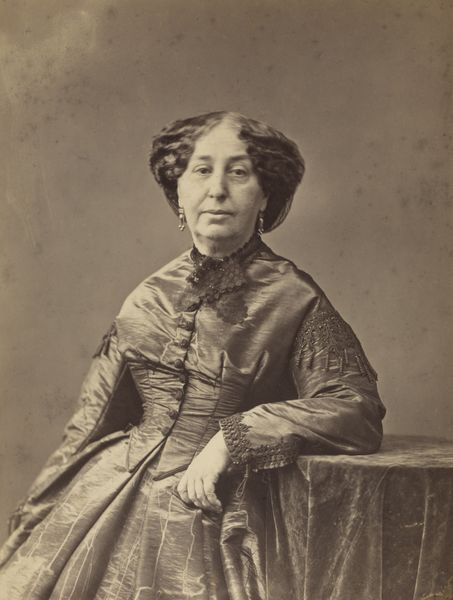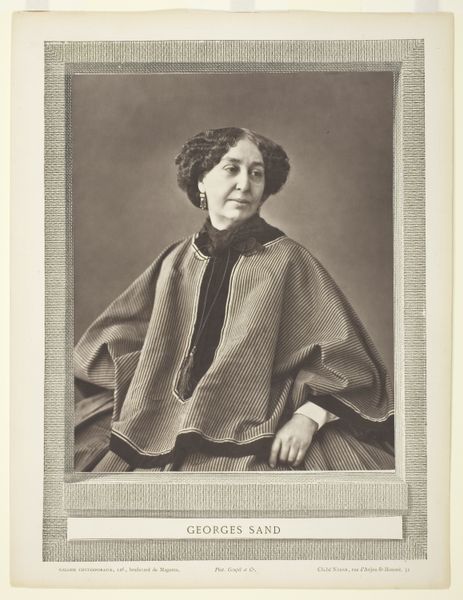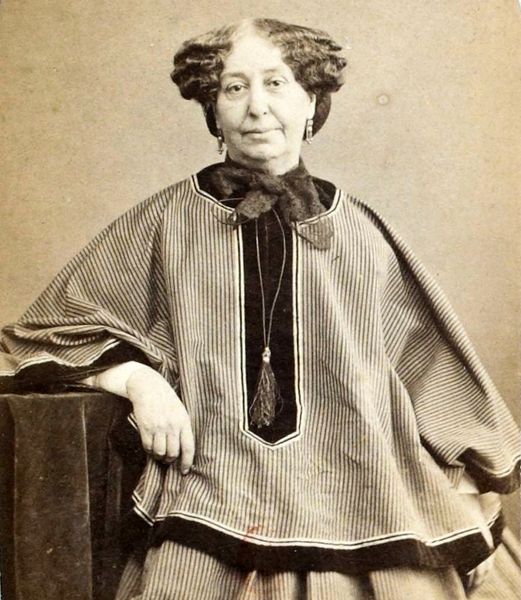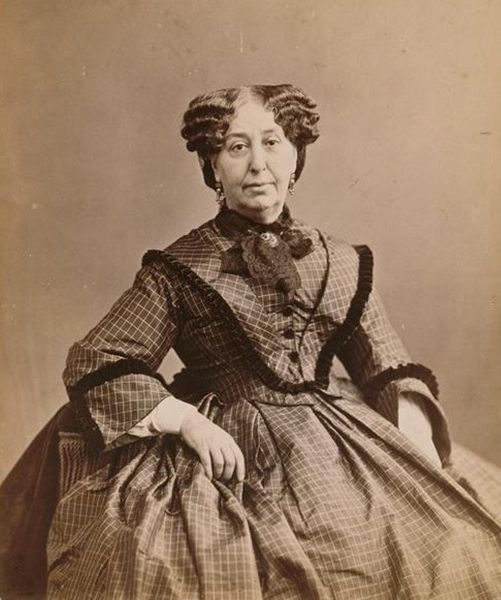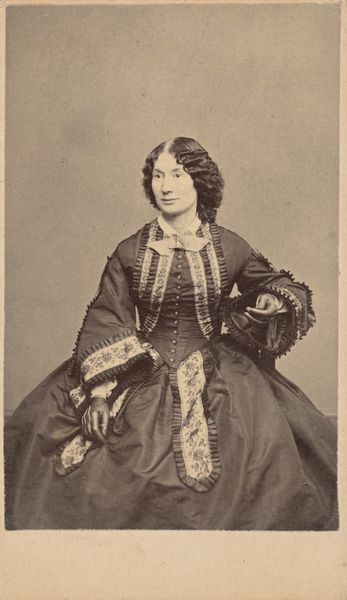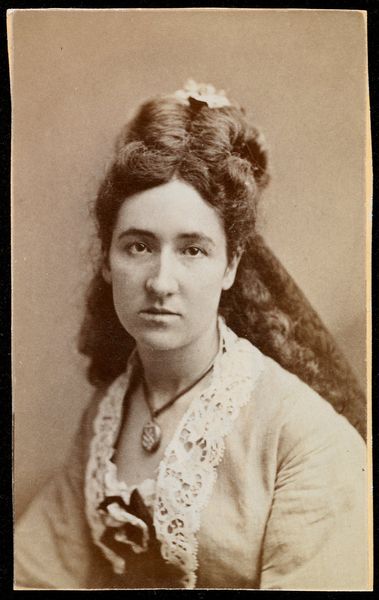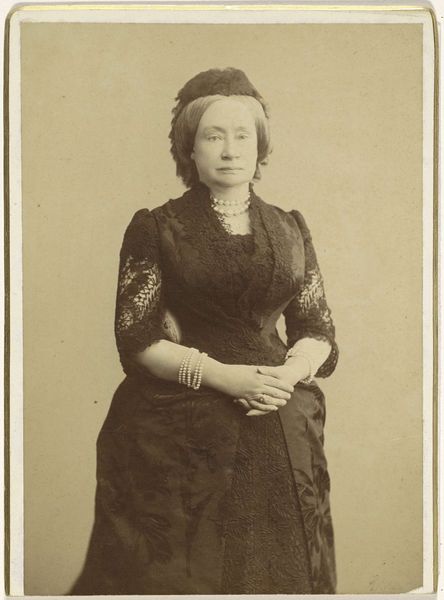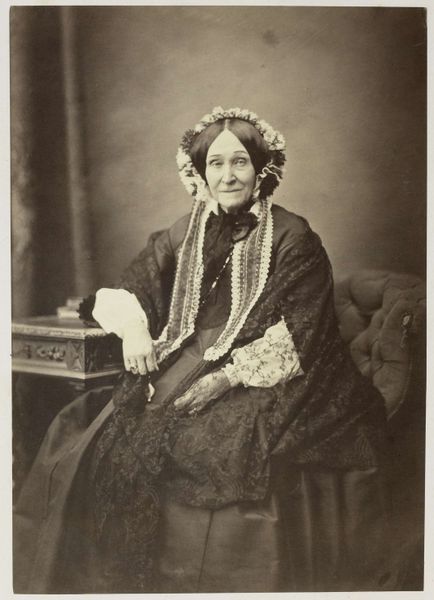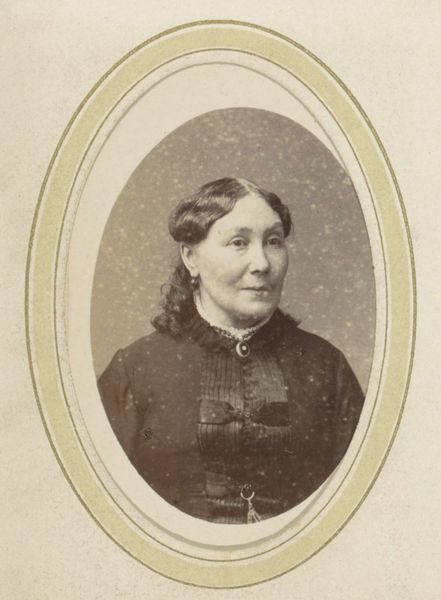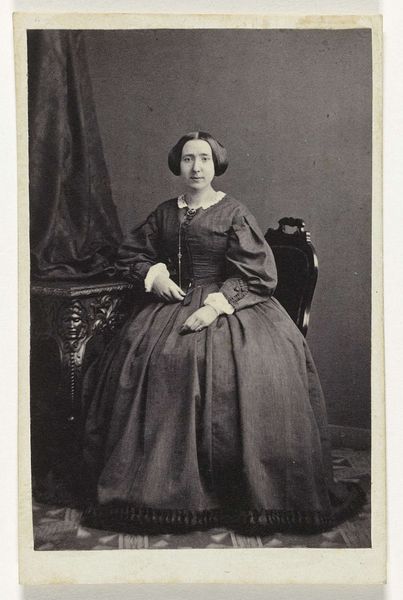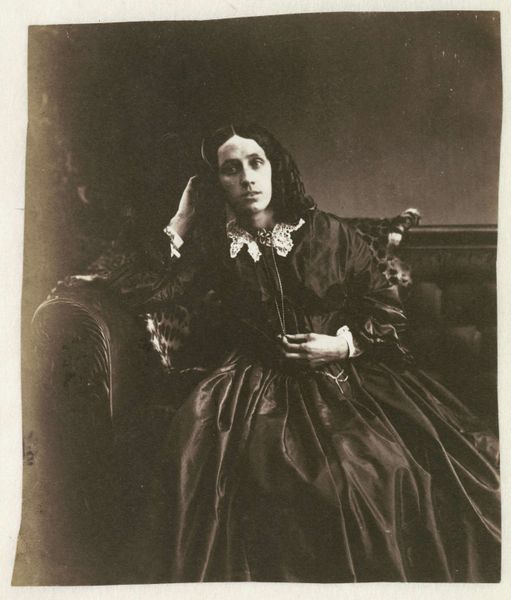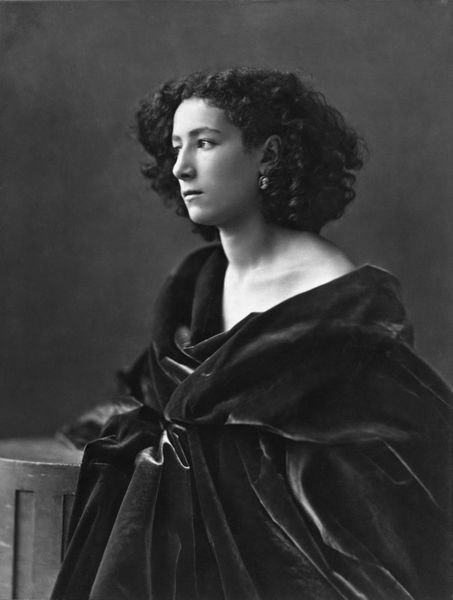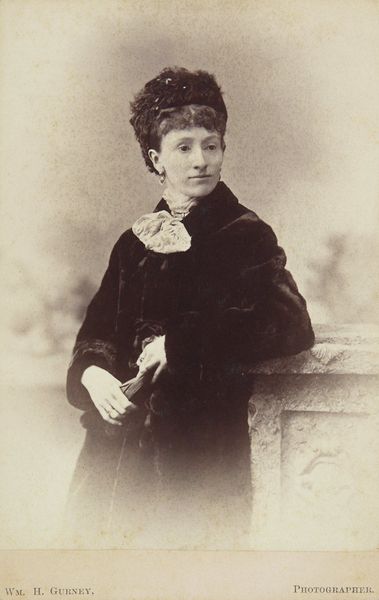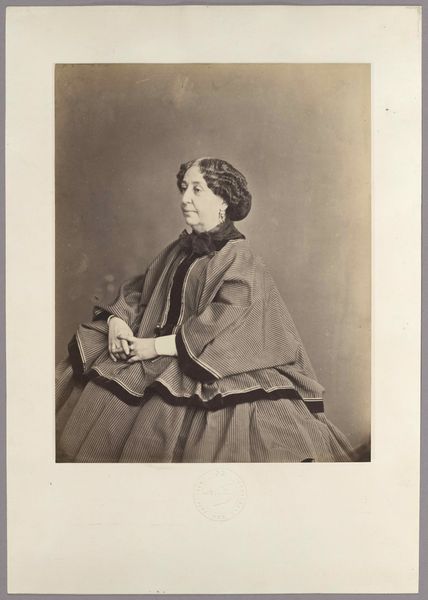
Copyright: Public domain
Curator: What strikes me first is the incredible sense of presence. The daguerreotype, "George Sand," by Félix Nadar, completed in 1864, captures the famed French novelist in such a direct, almost confrontational way. Editor: Confrontational is interesting! To me, the sepia tones soften that, almost like a romantic gaze. The slightly blurred edges create a dreamy atmosphere. But you're right; her gaze is intense and confident. It subverts typical 19th-century female portraits, where women were usually presented as delicate or passive. Curator: Nadar was incredibly important in elevating photography to the level of "art." His portraits weren't mere likenesses; they were deliberate constructions designed to reveal character. He photographed many notable figures of his day. Consider, too, the political context. This was a time of immense social upheaval, and Sand herself was a powerful, progressive voice in France. Editor: Absolutely. Sand was a literary force who wrote about working-class lives and pushed boundaries in both her writing and her life. It is really telling that Nadar photographs her as an intellectual, even challenging us as the viewer. Her clothes, the direct stare—it feels like she's declaring her independence. Also, the shawl with the striped print might allude to her many travels and independent spirit. It's subtly rebellious for the time, don't you think? Curator: The use of daguerreotype also adds weight. While photography allowed greater realism, its development was still influenced by art academies. The style nods to the traditional oil painting and, here, the chiaroscuro further draws attention to the expressiveness of the subject’s face, inviting us to study her like we would an allegorical composition. Editor: It truly gives off that intention. Even the way the light catches her brow furrows contributes to that. The stark lighting casts sharp shadows, giving her an almost severe appearance. However, there are more subtle suggestions that her role extends beyond just 'intellectual' through how the photo challenges traditional ideals. It's a political statement—her intellectual and creative prowess defy expectations. Curator: I agree. Looking at this image now provides us with a fascinating opportunity to examine Sand's importance beyond simply her status as one of the few recognized female authors from the period. Editor: Definitely, seeing the many interpretations present within her representation provides greater avenues of exploring women, writing and rebellion in French society during her lifetime.
Comments
No comments
Be the first to comment and join the conversation on the ultimate creative platform.
